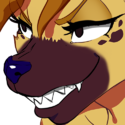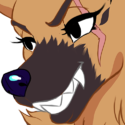Difference between revisions of "Gnolls"
m (→Characters) |
m (→Characters) |
||
| (5 intermediate revisions by the same user not shown) | |||
| Line 103: | Line 103: | ||
==Characters== | ==Characters== | ||
| − | {|class=" | + | <tabber> |
| + | Notable characters= | ||
| + | {|class="table" style="margin-left: auto; margin-right: auto; border: 2px solid #929292; cellpadding:1px; " | ||
|- | |- | ||
| − | | | + | |{{WikiHeadshot-index|name=Gnoll Princess}}{{WikiHeadshot-index|name=Gnoll Spellblade|text=(presumably half-[[Humans|human]])}}{{WikiHeadshot-index|name=Krot}} |
| − | |[[ | + | |} |
| − | | | + | |-| |
| − | | | + | Generic characters= |
| + | {|class="table" style="margin-left: auto; margin-right: auto; border: 2px solid #929292; cellpadding:1px; " | ||
|- | |- | ||
| − | | | + | |{{WikiHeadshot-index|name=Gnoll Alpha}}{{WikiHeadshot-index|name=Gnoll Raider}} |
|} | |} | ||
| + | </tabber> | ||
[[Category:Races]] | [[Category:Races]] | ||
Latest revision as of 13:32, 23 November 2024
"Nasty, stupid things. Don't let the fact that they're idiots fool you, though — gnolls may have tiny brains and thick skulls, but every ounce of their minds is crammed full of murderous thoughts. When they don't outright kill you, it's only so that they can rob you again. Best they stay on their side of the lake, and I intend to keep it that way."
—Chief Taldahs
Writer Credit
| The Observer |
|---|
|
Codex
Name: Gnoll (pl. Gnolls)
Sexes: Male and Female
Height: Ranges from between 5' and 5'5", with females standing slightly taller than males on average. Hunched postures, digitigrade feet and loping gaits often make them seem shorter than their actual body length; they could be quite a bit taller if they stood up straight.
Weight: Gnolls are light compared to many other Marcher races. General range is from 100lbs to 130lbs.
Skin: Gnolls are covered in a layer of pale to dark skin, and have a coat of tawny, golden fur over that. Their fur is often adorned with brown to black markings that vary by individual. It is said that no two gnolls have the same patterning. Their fur is often mangy and dishevelled, and may be lacking in places over old scars or recent wounds.
Hair: Being largely animalistic, gnolls do not have hair as humans do, but some do let the fur atop their head grow out a little.
Eyes: Gnolls have large, round animal eyes, almost uniformly black or brown.
Ears: Small hyena ears atop their heads
Lifespan: Gnolls who survive till adulthood generally live until only about 25 to 35. While infection and disease are rare, many get themselves killed in violent endeavors.
Maturity: 12 to 14 years.
Description
Gnolls are rabid, fast-breeding and quick-dying beastkin. Appearing like bipedal hyenas, they are generally, thin, bony and lanky, with what muscle they have wiry and stringy instead of thick. Muzzled and with paw-like hands and feet, these savage creatures generally settle in wide expanses with tall grasses; their preferred method of ambushing prey is to surround it in hiding and erupt from cover with little to no warning. Their dappled coats camouflage them well in foliage and grasses, lending further advantage to their surprise attacks.
Gnolls inhabit much of the continent which Old Belhar once spanned, largely plaguing the heartlands; however, they have spread as far as they can in search of plunder and easy resources. Stationary banditry and mobile banditry are of little difference to them; they see all who are not their own and oftentimes even rival packs as suitable prey. Their thin, wiry bodies are made for hounding and passing without notice alike, and only the few prize specimens of their kind have the ability and circumstance alike to put on any sort of weight.
Gnolls have an innate ability to simply not feel very much pain. They're certainly aware of their injuries and hurts, but it doesn't hinder them very much if they don't choose to be bothered with it. This isn't so much like a battle fury or adrenaline surge some warriors experience when confronted with injury or danger; it's more that their nerves are deadened when it comes to pain. Given this strange tolerance, it's unsurprising to find gnolls that fight on suicidally until their bodies finally give out, or for them to be walking around with wounds that would cripple someone of another race.
Reproduction
Usually, only the alpha female of a gnoll pack gets to breed; any of her daughters or sisters still in her pack will be hard-pressed to find a mate under the alpha's jealous eye. It's only when resources are absolutely abundant that other females get to breed, and even so the alpha will commandeer the lion's share of the goods for her own brood. The defining feature of a gnoll female's genitalia is the existence of a psuedopenis — an organ through which she engulfs a male's phallus and sucks out his seed. In terms of sexual acts, it's capable of being used in a similar fashion to the penis of other races, and females have been known to engage rivals in what can only be described as combative sex to establish dominance over the other.
Gnolls will only breed when there are adequate resources to do so; not that they stop having sex in the meantime. Usually thin and wiry, a gnoll female has to accumulate a certain minimum of body fat before becoming fertile, and this usually coincides with some external factor that precludes resource availability, such as the seasons. Once successfully bred, the gestation is short, being about three months, and two to three gnoll pups may be born in a litter. The young grow quickly, are always hungry and must be constantly fed, even after being weaned.
History
Gnolls have been a constant menace throughout the continent for much of history, dating back to time immemorial. Packs primarily attempt to raid lone farmsteads and people living in seclusion, preferring targets that they can overwhelm with their numbers alone; other easy prey include small groups of travelers and merchants. Larger numbers are usually enough to dissuade gnolls from aggression, which shaped societal development in areas where gnolls were particularly rampant as people clustered together for protection.
During the era of the Belharan Empire, a concerted effort was made to eliminate gnolls from imperial lands and make empty areas suitable for settlement. While the gnolls were as much, if not more ruthless than the imperials were, coordination, intelligence and superior equipment on the part of the latter soon saw the savage race mostly driven to the harsh wildlands on the edges of the empire. It would be a long time before the empire fragmented, leaving pickings on which the gnolls could once again feast.
In the Marches, the land east of Lake Tarahugan in Harvest Valley is considered infested with gnolls, and marefolk and centaurs alike have shielded the local farmers from being preyed upon in exchange for sharing in the farmers' produce. With both parties now preoccupied with other matters, the ever-hungry gnolls have begun creeping in again and are up to their old shenanigans.
Society & Culture
Gnolls typically live in packs of four to ten that may range about a claimed piece of territory or migrate in a nomadic fashion. Each pack is led by an alpha female, who serves as the matriarch; the rest consist of her mates, sons, and the few sisters or daughters who have yet to leave the pack. A gnoll female will typically strike out on her own at about the age of twelve to fourteen; if she has particularly impressed her mother, she may even take a couple of her mother's pack along to help her get started. Packs which meet often exchange young males to avoid excessive inbreeding, which is often unavoidable to some extent; nomadic gnolls often serve to transfer males between territorial gnoll packs. Larger packs may have two or three females as a whole, but who is matriarch is never in doubt.
Gnolls are generally thought to be capricious and opportunistic — when there are no outsiders to prey on, gnoll packs often fall to infighting over limited hunting and gathering resources. Sometimes, a weak, injured or elderly alpha of a pack may face usurpation by a female relative dissatisfied with her lot; this is usually how gnoll packs change leadership, by dint of a daughter's matricide.
Gnolls rarely produce their own tools, weapons, or other possessions; it's much easier to steal such items from others. They're able to create simple and crude versions of implements such as flint spears and knives, but little more than that. Pelts may be tied together with gut and sinew to form some protection against the elements, but gnolls prefer not to wear anything if they can get away with it. They create no permanent shelter, but are able to put together simple lean-tos in short order and seeking natural relief from the elements.
Gnolls have their own language, which generally involves a lot of yipping, barking and grunting, but some particularly bright individuals — or at least, bright for gnolls — have learned small snippets of the Belharan trade tongue.
Codex Acquisition
Only one of the conditions below must be met to unlock the Gnolls Codex entry:
- Met the Gnoll Raiders at the Southern region of the Harvest Valley
Other Information
| Aliases |
|
|---|---|
| Adjectives |
|
Transformatives
Gameplay Attributes
| Affinities |
|---|
Characters
Gnoll Princess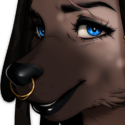 Gnoll Spellblade Gnoll Spellblade(presumably half-human) 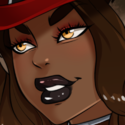 Krot Krot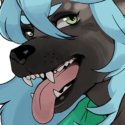
|
